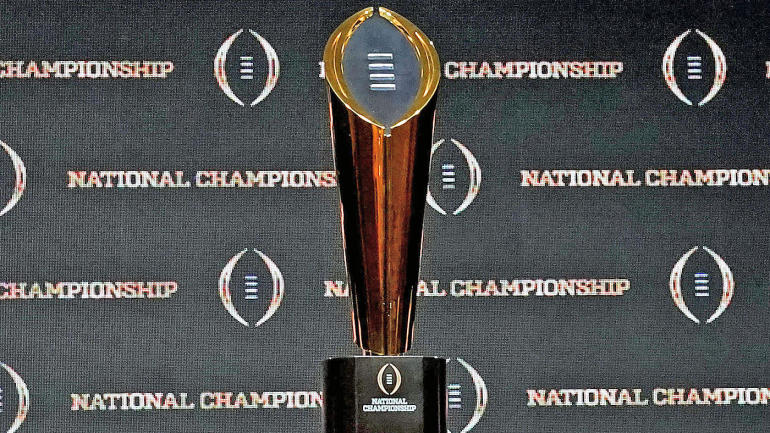
The inaugural 12-team College Football Playoff will feature five automatic bids and seven at-large bids after the CFP Board of Managers voted unanimously on Tuesday to tweak the access formula for the expanding postseason tournament. The move will grant guaranteed access to the sport's top five conference champions as college football moves into a new era following the splintering of the Pac-12. The format will stay in place at least over the course of the next two seasons as the CFP negotiates a new television contract for 2026 and beyond.
"This is a very logical adjustment for the College Football Playoff based on the evolution of our conference structures since the board first adopted this new format in September 2022," CFP Board of Managers chair Mark Keenum said. "I know this change will also be well received by student-athletes, coaches and fans. We all will be pleased to see this new format come to life on the field this postseason."
Previously, the format was set to be 6+6 with the top six conference champions gaining guaranteed access. But when the Pac-12 imploded last year while essentially leaving college football with just four power conferences, CFP leaders returned to the drawing board.
The CFP Management Committee approved the 5+7 model in November, putting the final decision in the hands of the Board of Managers, which is meeting this week in Texas.
A 5+7 format still leaves the door open for a non-power conference team to make the CFP on an annual basis as the sport transitions to a de facto "Power Four" comprised of the ACC, Big 12, Big Ten and SEC. Had the CFP opted to keep the 6+6 model, it would have assured two bids to teams from outside the power conference structure.
Mirroring the original intent
Staying with the 6+6 format amid the Pac-12's implosion would have given the College Football Playoff a decidedly Cinderella tint as it would have guaranteed access for the two highest-ranked conference champions from the following five leagues: AAC, Conference USA, MAC, Mountain West and Sun Belt. In 2023, those teams were No. 23 Liberty (C-USA) and No. 24 SMU (AAC). SMU ended up losing to Boston College in the Fenway Bowl while Liberty lost 45-6 to Oregon in the Fiesta Bowl.
By moving to a 5+7 format, CFP leaders are simply realigning with the original premise of affording access to one team from outside the power conference structure. Though the Pac-12 could eventually re-form by adding schools from other leagues to compete alongside Oregon State and Washington State, its hopes of realistically being viewed as a peer of the ACC and Big 12 are gone despite the best efforts of its remaining leaders.
Cloudy picture on TV negotiations
The 5+7 format could wind up being only a stopgap solution anyway as the CFP negotiates a new media rights agreement that will take effect once its current deal with ESPN expires after the 2025 season. While it's been reported that the CFP and ESPN have agreed to a six-year contract extension worth a total of $7.8 billion, CFP Management Committee member Jon Steinbrecher disputed that in a recent memo.
As the Big Ten and SEC continue to amass power in the collegiate sports landscape, it's expected that the respective commissioners will push for favorable terms in future iterations of the CFP, both in terms of revenue and playoff access. A CFP comprised exclusively of at-large bids would likely benefit the more powerful leagues, who could then use their monopolization of bids to push for larger shares of the CFP revenue.
So, while the future of college football's postseason has been decided for the next two years, its long-term future remains a point of contention and uncertainty.
















